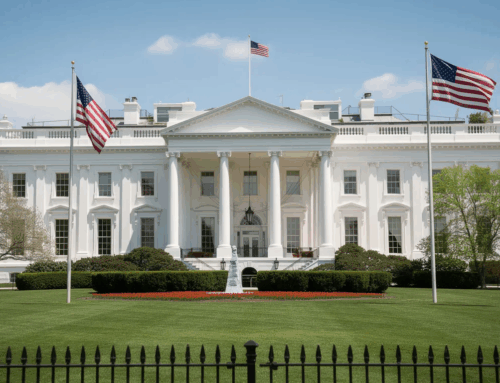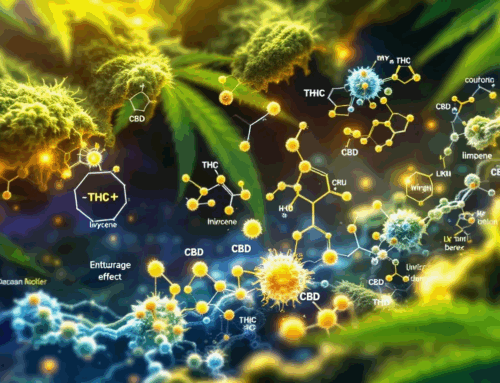What Is The Difference Between Medical And Recreational Cannabis?
Cannabis is becoming increasingly popular in the US, and with the growing acceptance of medical cannabis, it’s no surprise that many people are trying to understand what differentiates recreational from medical use. In this blog post, we dig deep into both types of cannabis use to provide a comprehensive picture of the differences between them. We’ll cover what qualifies as medical versus recreational usage and dive into legal considerations for using each type of cannabis. Whether you’re a patient in need of medicinal marijuana or simply curious about how they differ, this blog post will give you a deeper understanding of both and equip you with accurate information regarding the nuances between these two types of cannabis forms.
An Overview of Medical and Recreational Cannabis
Medical and recreational cannabis are two different applications of the same plant. Medical cannabis is used for medicinal purposes and is prescribed by a doctor, whereas recreational cannabis is used for personal enjoyment. Medical cannabis contains higher levels of CBD, a chemical that does not produce a “high,” while recreational cannabis contains higher levels of THC, the chemical that does. In recent years, cannabis has gained more widespread acceptance and legalization across the United States. Whether you are considering cannabis for medical or recreational use, it is essential to educate yourself on the specific laws and regulations in your state before making any decisions.
The Difference Between Medical and Recreational Cannabis
Cannabis has been making headlines for its medicinal and recreational properties. While both types come from the same plant, there are some key differences between medical and recreational cannabis. Medical cannabis is specifically grown and formulated to treat symptoms of certain medical conditions, such as chronic pain or epilepsy. These products are often available in pharmacies or licensed dispensaries and require a doctor’s prescription. On the other hand, recreational cannabis is used for its psychoactive effects and is meant for enjoyment or relaxation. It is typically purchased from licensed retailers and does not require a doctor’s recommendation. It’s important to note that both types of cannabis can have potential side effects and can interact with other medications. To ensure safe usage, it’s recommended to speak with a healthcare professional before consuming either type.
Health Benefits Of Medical Cannabis
Medical cannabis has been gaining popularity due to its numerous health benefits. Known for its ability to relieve pain and reduce inflammation, cannabis has been used to treat a variety of medical conditions such as epilepsy, multiple sclerosis, and even cancer. It’s believed that cannabis contains compounds that have therapeutic effects on the body’s endocannabinoid system, which plays a key role in regulating various bodily functions such as appetite, sleep, and mood. Moreover, medical cannabis has been shown to improve the quality of life for patients suffering from chronic pain and anxiety disorders. As more research is conducted, it’s becoming increasingly clear that medical cannabis has the potential to revolutionize the healthcare industry and improve the lives of thousands of people.
Legal Differences Between the Two Types of Cannabis
Cannabis, also known as marijuana, is a controversial topic that has been the subject of debate for years. In some states, cannabis has been legalized for both medicinal and recreational use. However, two types of cannabis are recognized by the law – hemp and marijuana. The legal differences between the two types of cannabis are significant. Hemp is legally defined as cannabis that contains less than 0.3 percent THC, the psychoactive component of the plant. Marijuana, on the other hand, contains significantly more THC and is still illegal under federal law. Understanding these legal differences is crucial for anyone who intends to use, grow, or sell cannabis in any form.
Accessibility and Pricing Differences
Accessibility and pricing differences are important factors to consider when it comes to purchasing any product or service, and it’s no different when it comes to technology. With advancements in accessibility options, it’s become easier for individuals with disabilities to access technology, but this often comes with a higher price tag. Companies need to find a balance between making their products accessible without making them unaffordable. Additionally, it’s important to note that not all accessibility needs are the same, so companies should strive to offer a range of options to meet the needs of diverse populations. By prioritizing accessibility and pricing considerations, companies can create a more inclusive and equitable technological landscape.
How to Choose the Right Type for You
When it comes to creating content for YouTube, choosing the right type of video can make a big difference in the success of your channel. One of the first things to consider is your niche or area of expertise. If you are skilled in teaching or explaining things, you may want to consider creating tutorials or how-to videos. Alternatively, if you have a talent for entertaining, you can try creating humorous or engaging content. It’s also important to think about your audience and what they might be interested in watching. Finally, keep in mind that the type of video you choose can also impact the amount of time and effort you need to put in. So take some time to evaluate your skills and audience before deciding on your next YouTube video.
In conclusion, we hope that this blog post has given you a better understanding of the difference between medical and recreational cannabis. Depending on your needs, there are important differences to consider including legal access, pricing and availability, health considerations, and local regulations. Ultimately, choosing the right type of cannabis for you should involve careful consideration of all these factors to ensure that you are accessing the product that best meets your needs. Whether you’re looking for therapeutic effects or just want to unwind after a long day, with the proper research knowledge there is a type of cannabis that can meet your needs.
FAQ
1. What is the difference between medical and medicinal?
In the context of cannabis, "medical" and "medicinal" are generally used interchangeably. Both terms refer to cannabis that is used for the treatment of a medical condition.
2. What type of cannabis is medical?
There's no single type of cannabis classified as "medical." Many strains of cannabis can be used medically, depending on the condition being treated and the desired effects. Medical marijuana typically comes from the same cannabis plant (Cannabis sativa) as recreational marijuana. However, the focus for medical marijuana is often on strains with high levels of cannabinoids like CBD (cannabidiol) which offer potential therapeutic benefits, whereas recreational marijuana may prioritize THC (tetrahydrocannabinol) content for its psychoactive effects.
3. What is the difference between medical and recreational cannabis?
Here's a breakdown of the key differences between medical and recreational cannabis:
- Legal Status: Medical marijuana requires a doctor's recommendation and a medical marijuana card for legal purchase and use. Recreational marijuana is legal for adults (age 21 or older) to purchase and consume without a medical need in some states.
- Purpose: Medical marijuana is used for treating various medical conditions, while recreational marijuana is used for enjoyment and relaxation.
- Regulation: Medical marijuana is often subject to stricter regulations regarding cultivation, testing, and sale compared to recreational marijuana.
- Potency: There can be some variation, but medical marijuana may not necessarily be more or less potent than recreational marijuana. The focus for medical marijuana is often on specific cannabinoid profiles for targeted therapeutic effects.
4. What is the difference between medical marijuana and CBD?
Medical marijuana and CBD are related but not identical:
- Medical Marijuana: Refers to the whole cannabis plant or its extracts, containing various cannabinoids like CBD and THC. The combination of these cannabinoids and other compounds can produce a range of effects, depending on the specific strain and how it's consumed.
- CBD: Cannabidiol is a specific cannabinoid found in cannabis. It has become a popular natural remedy for various conditions, though research is still ongoing. Unlike THC, CBD is not psychoactive, meaning it doesn't cause intoxication. CBD can be extracted from the cannabis plant and sold in various forms like oils, capsules, or edibles, separate from the whole marijuana plant.
5. Medical vs. Recreational Potency in Colorado
There's a common misconception that medical marijuana in Colorado is inherently more potent than recreational marijuana. In reality, the legal distinction between medical and recreational marijuana in Colorado focuses on how it's obtained (with a medical card vs. being over 21), not necessarily the potency of the product itself.
Both medical and recreational dispensaries in Colorado can offer a wide range of cannabis products with varying levels of THC and CBD. Consumers in Colorado, whether medical or recreational, have the freedom to choose products based on their desired effects and individual needs.




